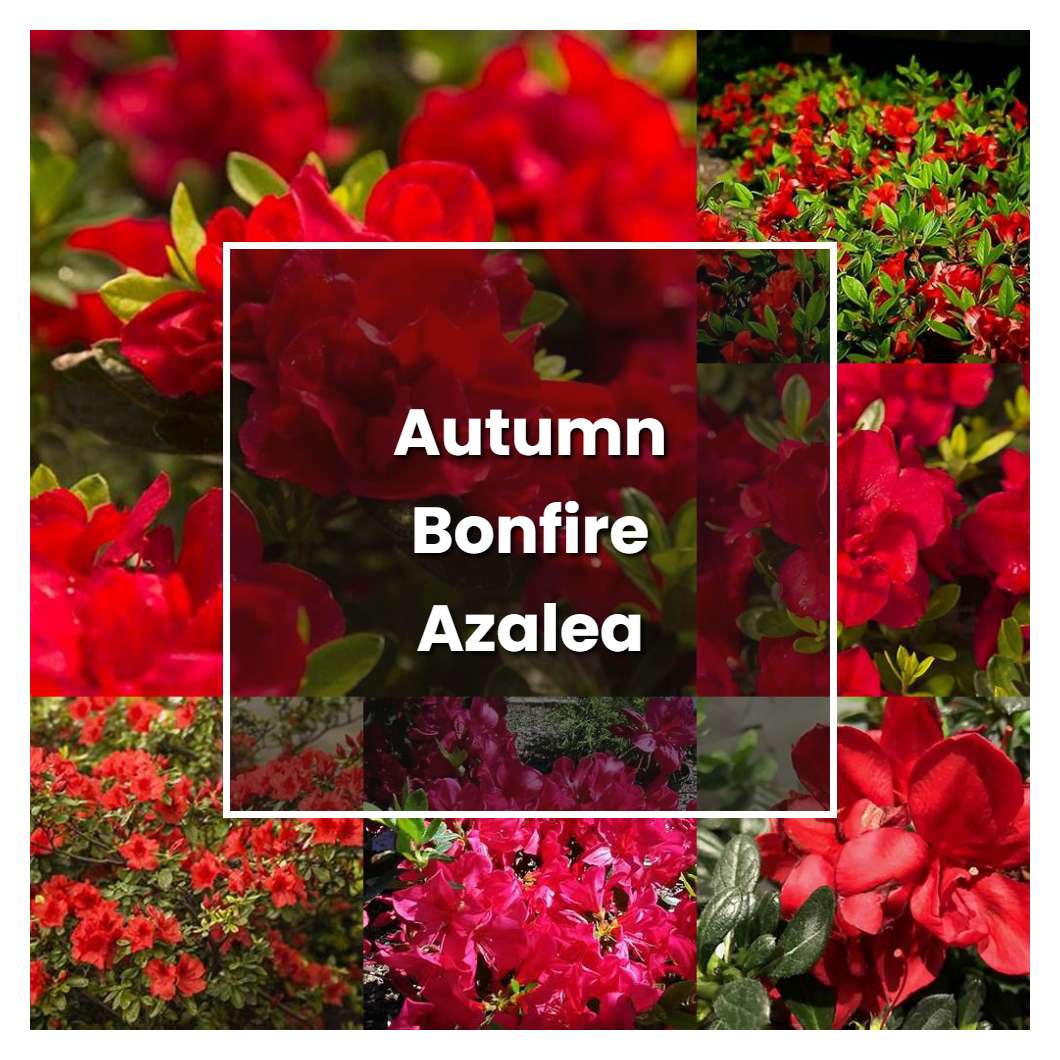Autumn bonfire azalea is a beautiful shrub that produces stunning blooms in shades of orange, yellow, and red. This plant is perfect for adding a touch of color to your autumn garden. This azalea is easy to care for and is drought tolerant once established.

Related plant:
Ceanothus Autumnal Blue
Related plant:
Autumn Embers Azalea
About soil condition, the best time to plant an azalea is in autumn because the soil is still warm from the summer sun and the rains have helped to loosen it up. The roots of the azalea will be able to grow easily into the loose soil, and the plant will be able to establish itself before the cold winter weather sets in.
So, like the other azaleas, the Autumn Bonfire azalea requires full sun to partial sun in order to thrive. It's a good idea to plant this shrub in an area that receives at least six hours of sunlight each day. In terms of soil, the Autumn Bonfire azalea prefers acidic, well-drained soil that is rich in organic matter.
The temperature condition that is best for the autumn bonfire azalea is a temperature that is cool but not freezing. This plant does not like it too hot or too cold. A temperature that is cool but not freezing is perfect for this plant.
Ideal humidity condition for this plant is around 50%, any higher and the leaves will start to droop. If the leaves droop, they will not be able to photosynthesize properly and the plant will start to die.
The fertilizer, this type of plant food, is very important to the health of your azalea. The roots of the plant are the part of the plant that takes in the nutrients from the soil, so it is important to make sure that the roots are healthy and able to take in the nutrients. A good way to ensure that the roots are healthy is to use a root stimulator.
Pruning is an important part of keeping your autumn bonfire azalea healthy and looking its best. Prune in late winter or early spring, before new growth begins. Remove any dead, diseased, or damaged branches. Cut back stems that are longer than needed. Thinning the azalea's canopy will allow more light and air to reach the plant, promoting healthy growth.
Propagation for autumn bonfire azalea is typically done through rooting stem cuttings. Cuttings should be taken from new growth and be 4-6 inches long. The cuttings should be placed in moistened perlite or sand and placed under indirect light. After a few weeks, the roots should be well-established and the plant can be transplanted into a pot or into the ground.
Usually, the plant growth rate is determined by the weather conditions during the growing season. The soil temperature, rainfall, and amount of sunlight all play a role in how fast the plant will grow. Under ideal conditions, the autumn bonfire azalea can grow up to 2 feet per year.
Common problems for this kind of plant are aphids and caterpillars. Both of these pests can be controlled with regular spraying of insecticidal soap or neem oil. If caterpillars are present, they can be removed by hand and destroyed.
Source:
Acer saccharum Bonfire - Oregon State University
Key Plant, Key Pests: Azalea ( Rhododendron spp.) - University of Florida
Florida Azaleas - UF/IFAS Extension
